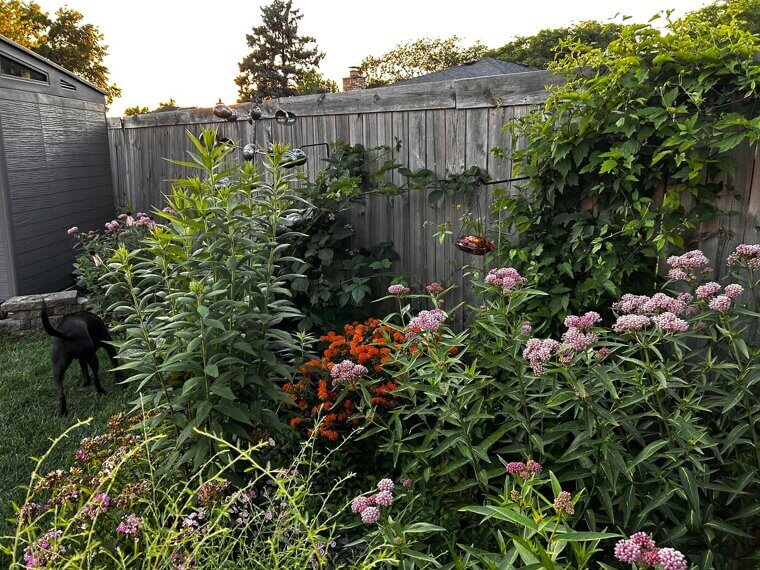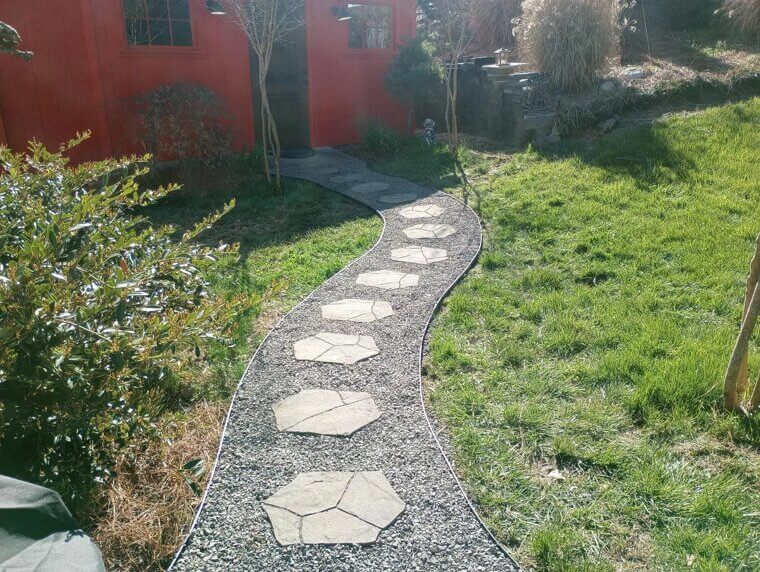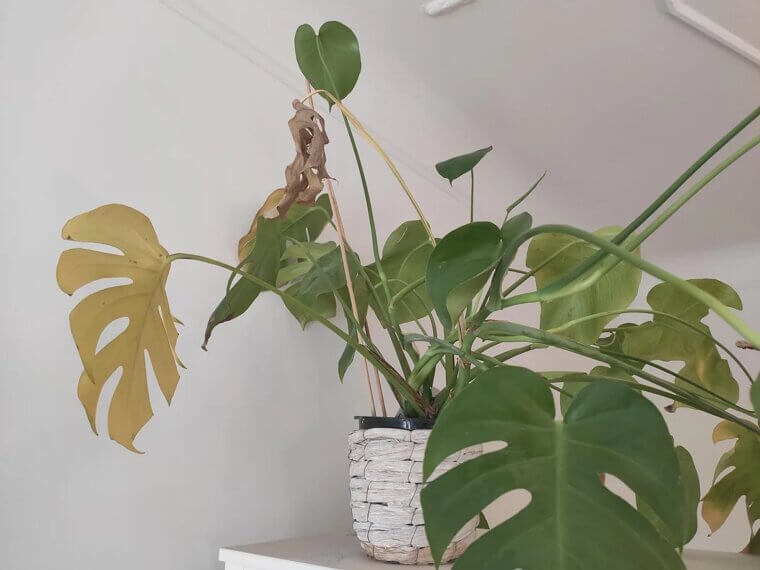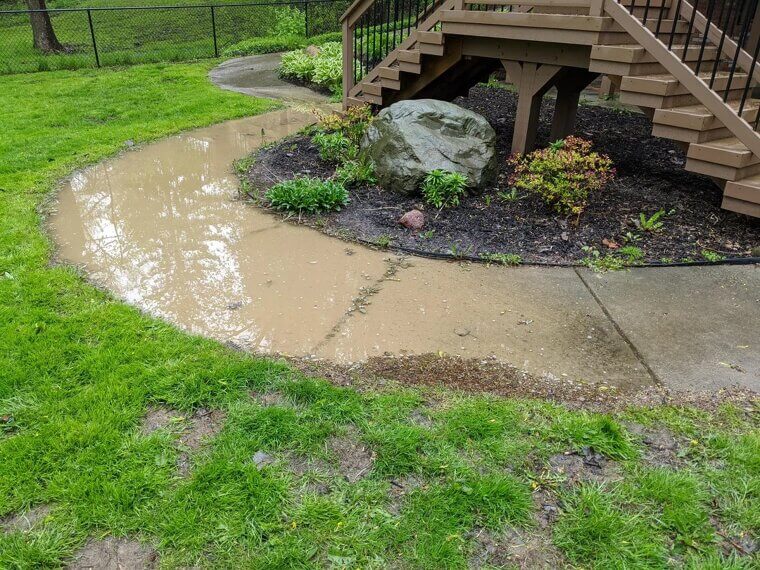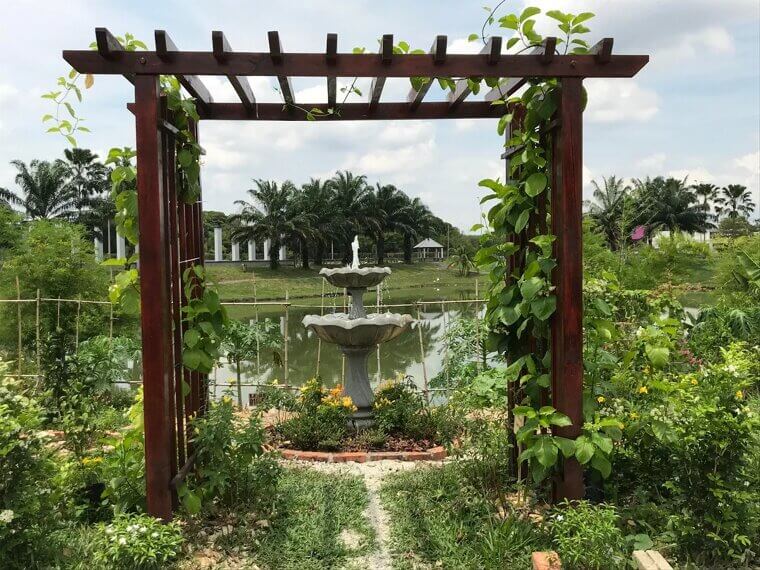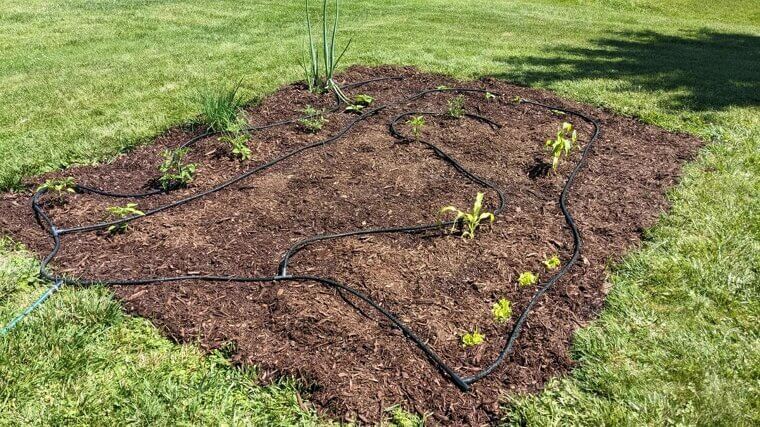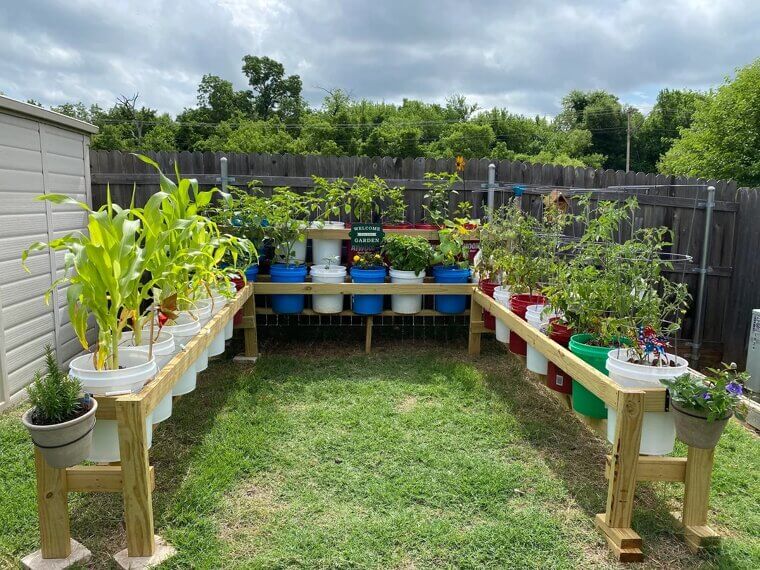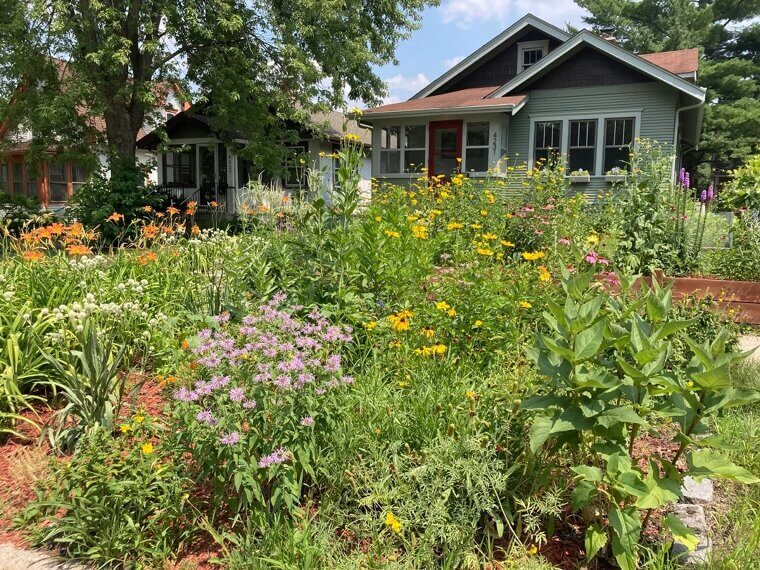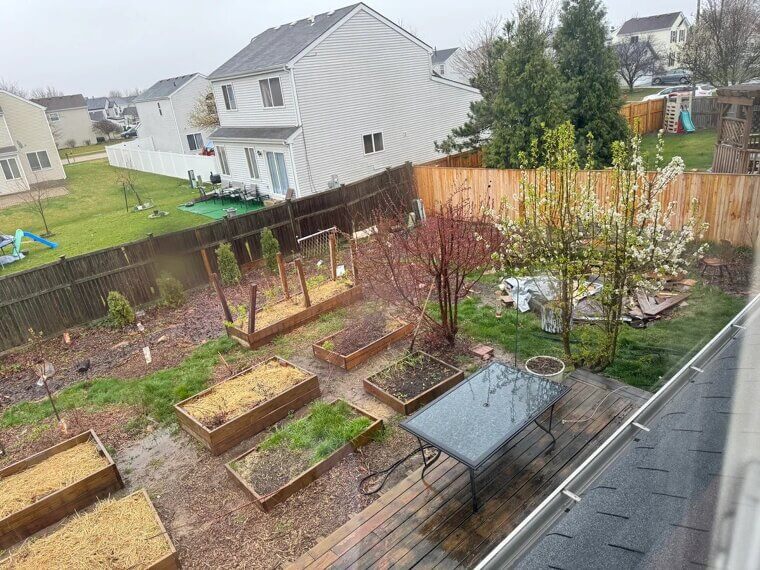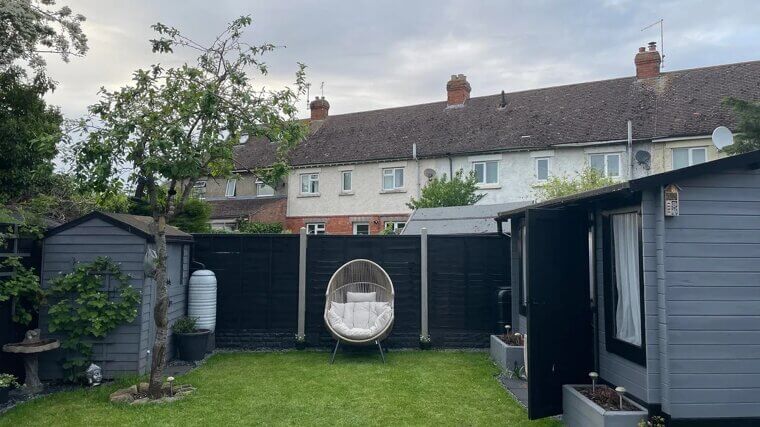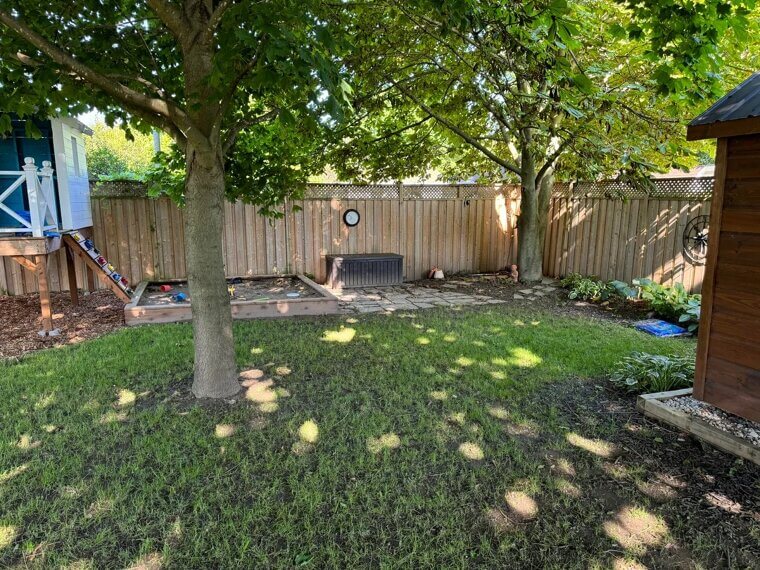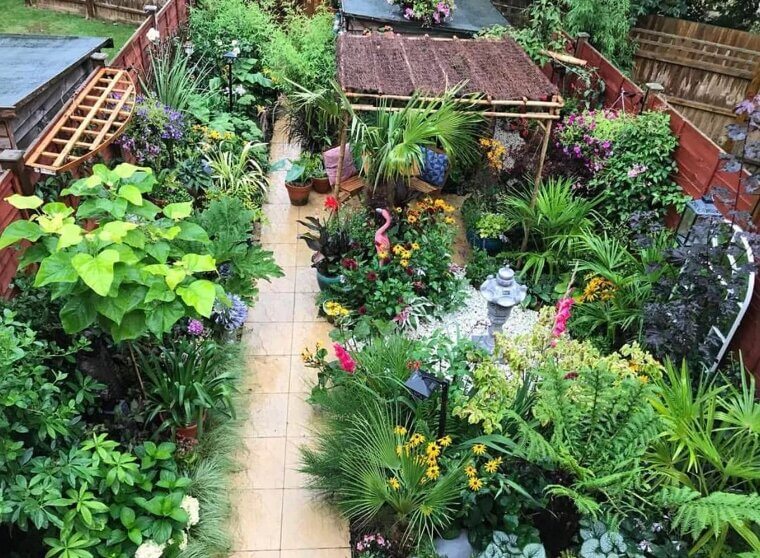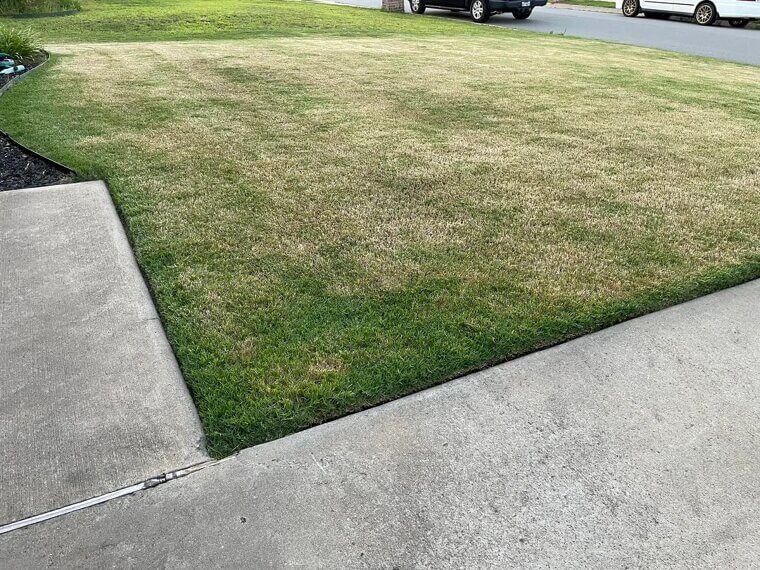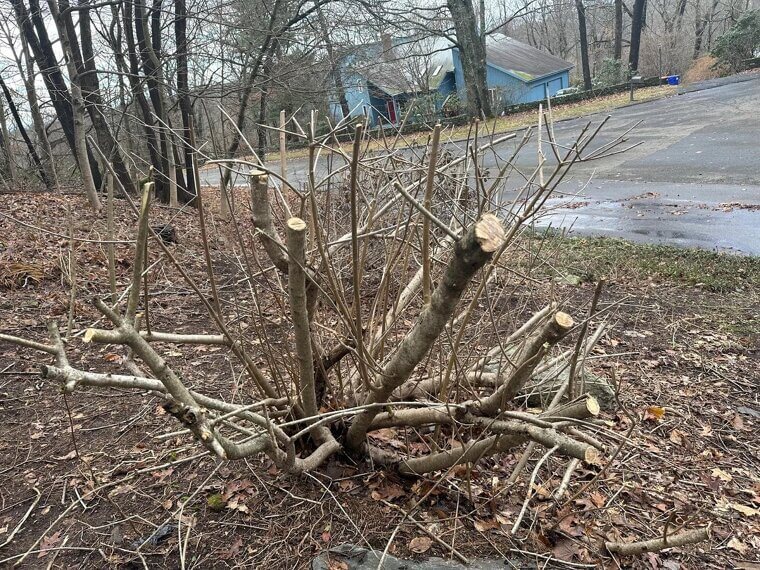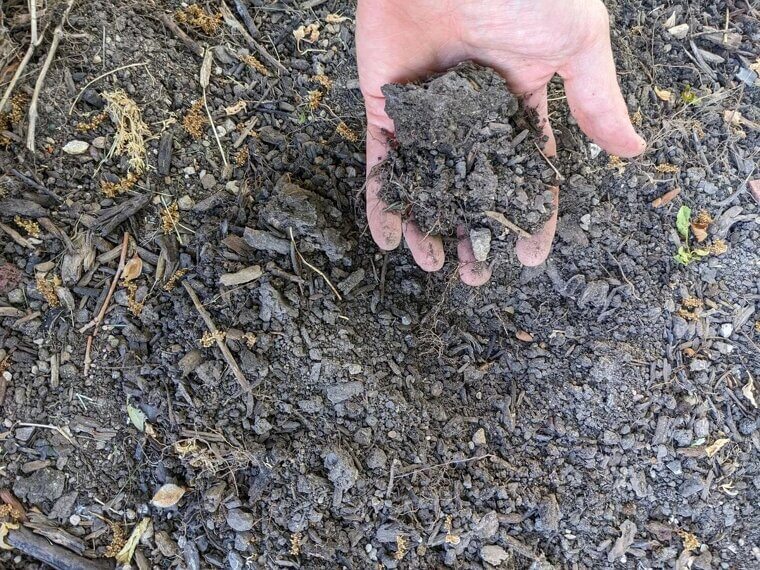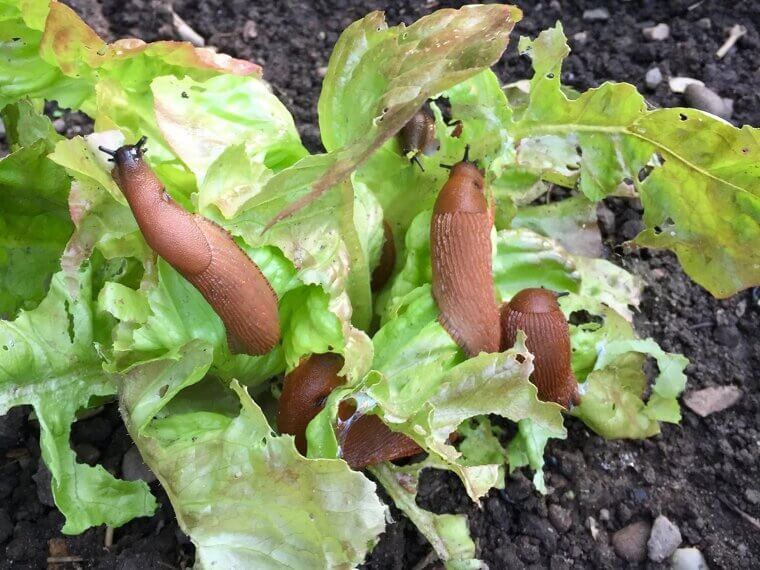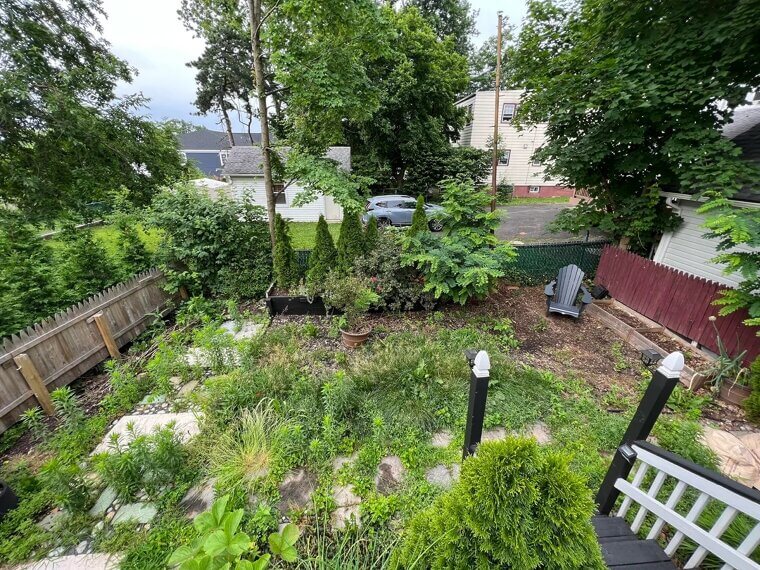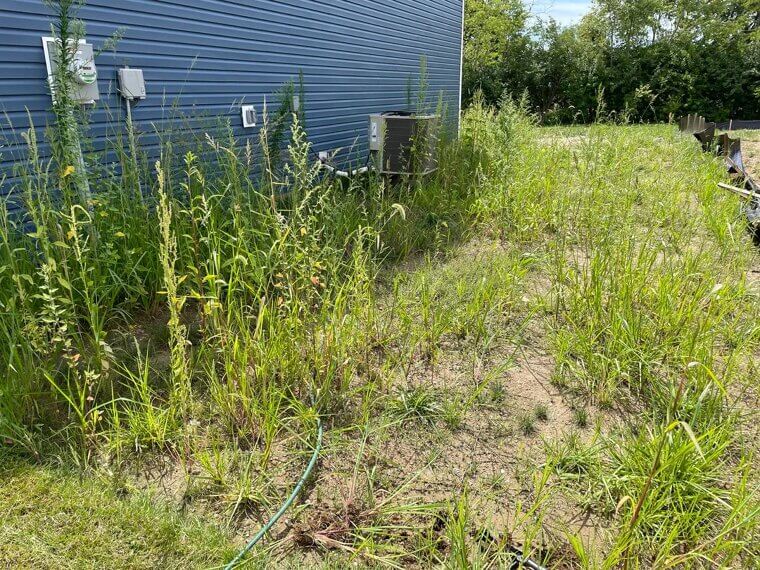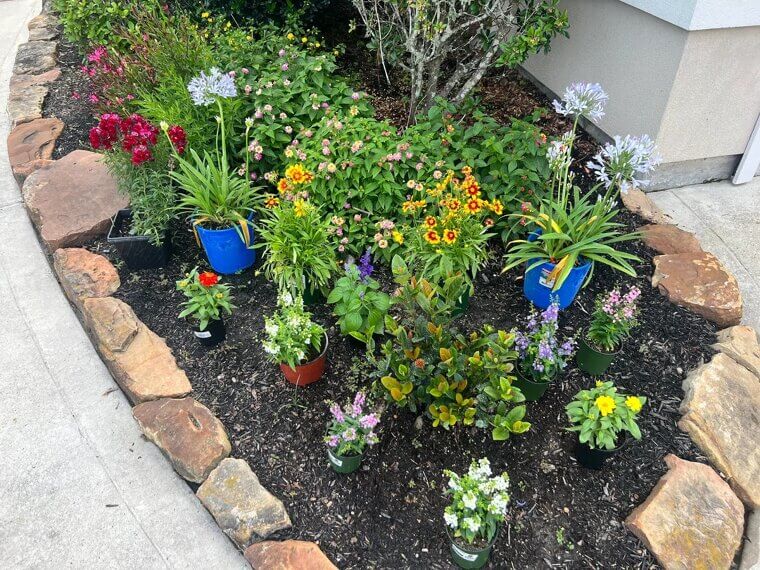Excessive Decoration
Just like a Christmas tree, an excessively-decorated garden looks cluttered and messy. Too many gnomes, statues, or water features detract from the natural beauty. They're better used as visual anchors to guide the eye across the beautiful beds and pots of plants and flowers.
Overcrowding Plants
Big flowerbeds look beautiful, but it's not a good idea to cluster plants together. This limits their growing space, prevents proper airflow, and blocks light from reaching shorter plants. To grow healthy plants, respect their personal space and give them space to fully bloom.
Ignoring Pathways
You don't need to create anything elaborate, but without at least one pathway, your garden will be difficult to navigate. A path makes it easier to organise plants and structure the garden, while also allowing you to walk through without trampling any green life.
Overwatering
Only one thing is as harmful as forgetting to water your plants: overwatering them! Too much water suffocates the roots and causes the plants to rot. They need just enough water to grow while also absorbing nutrients, so only water them as much as is recommended.
Poor Drainage Planning
Speaking of excessive water, you need to plan for drainage before adding any plants to your yard. If the soil cannot reliably drain itself, it will remain too soggy and deprive the roots of oxygen. The easiest solution is to use raised flowerbeds so water naturally runs down.
No Visual Anchors
A full garden looks good, but you still need something to draw the eye and add some depth. Anything from a centerpiece tree or sculpture to an arbor or pergola will act as a focal point and stop the space from feeling cluttered or flat.
Skipping Mulch
It's a bit gross to handle, but without mulch, soil actually dries out faster and temperature changes stress plant roots. You can buy big bags of mulch from any gardening store for your yard, and this reduces maintenance and improves plant growth.
Using Incorrect Containers
If you think a pot is suitable just because the plant fits in it, think again! Containers must take into account a plant's growth, soil requirements, and preferred climate. If you choose a pot that stifles growth or prevents drainage, you could kill the plant.
Forgetting Seasons
Any gardener will tell you that seasonal patterns are the bane of their existence, so don't forget about them. Many people make poor plant choices because they forget about seasons, causing some to bloom too late and others to die early. Always use seasons as a guide.
Too Much Symmetry
Sometimes symmetry works, and sometimes it doesn't. You should avoid overusing it in your yard because it won't look natural, and plants thrive best when they're planted properly. This might look a little chaotic and informal, but that's the beauty of gardening.
No Privacy
There's nothing better than relaxing in your garden, unless your neighbors can peek in! People often forget to factor in privacy, which results in a very exposed garden without any trees, hedges, or high decorative pieces. These also help to block wind and noise.
Ignoring Sun and Shade
You might think the sun shines everywhere equally, but, unfortunately, it's not that simple! Planting things in shady spots stunts their growth and flowering, and vice versa for those that hate too much sun. Match plants to areas where they will thrive.
Being Impractical
Even the most experienced gardeners have to be realistic when designing their yards, and many great designs simply aren't practical. High-maintenance plants and complex layouts cause undue stress and make it much harder to give the garden the attention and care it deserves.
Mowing Too Short
Grass is one of the core parts of a good yard design, but it also requires specific care. If you mow it too short, you scalp the grass and weaken the roots. Keeping a little extra length shades the soil, draws down moisture, and helps to reduce weeds.
Improper Pruning
Speaking of scalping, improperly pruning hedges and bushes is terrible for their health. It ruins their natural shape and invites damage and disease. Each plant has its own preferred pruning techniques, so learn those and stick to them for optimal garden health.
Neglecting Soil Health
Healthy plants grow in healthy soil, and if you stick to that rule, your garden will flourish. When you design the garden, choose soil that is full of nutrients, promotes growth, and maintains a good pH. Regularly check it to maintain its condition.
Underestimating Slugs
All it takes is one slug to decimate a perfectly healthy plant, so don't underestimate them! If you notice a slug problem, deal with it before it gets out of hand, otherwise you'll lose countless plants. Look out for any other pests too.
Poor Maintenance
Gardening is all about maintenance, and you can't afford to be lazy. Too many people put off essential tasks, like watering, weeding, and checking soil, and this affects a garden's growth and health. Even ten minutes each day will make a difference and spread out the workload.
Ignoring Weeds
Once weeds fully invade your garden, you'll have a tough job getting rid of them, so you must deal with them straightaway. Pulling them up as soon as you see them stops them stealing nutrients from your plants and keeps the garden looking good.
No Future Planning
Your garden's design might look good right now, but is it future-proofed? Plants grow quickly and need plenty of space. You also need to think about when to plant each thing so it thrives in the weather. Thinking ahead saves time and money down the road.


